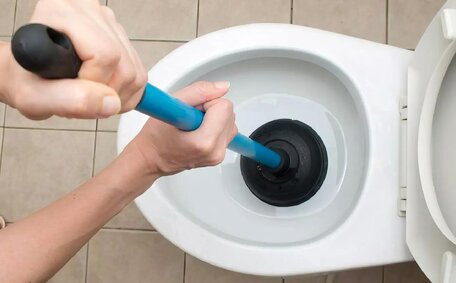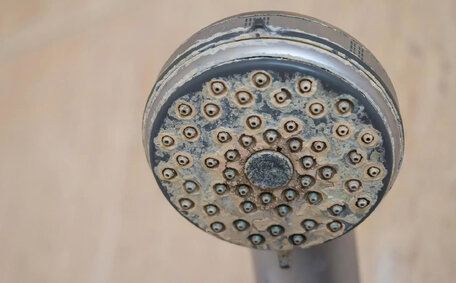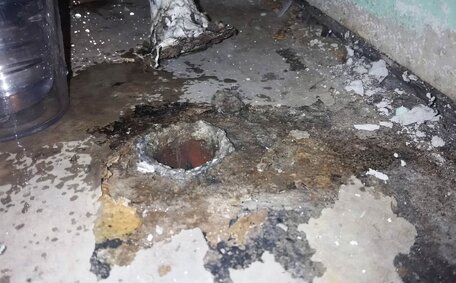What is a Water Booster Pump System?
A water booster pump system enhances household water pressure and flow from an insufficient main supply, comprising pressure booster pumps, a pressure tank, and sensors to achieve optimal pressure from your municipal or well water source.
Booster pumps are indispensable in homes and buildings with low pressure to ensure consistent water flow to all floors and distant fixtures, enhancing the function of taps, showers, and appliances such as dishwashers and washing machines.
An appropriately chosen booster pump effectively overcomes low pressure issues, providing your home with the required water volume and pressure.
When Do You Need a Water Booster Pump?
You may question, 'do i need a water booster pump?' if the pressure flow in your residence or building is unsatisfactory, especially on upper levels or far from the main water line’s entry point, indicating the need for water booster pump systems. insufficient flow from taps and showers is a common indicator of how much you might need booster technology.
Homes at high elevations or with long supply lines from the street or well can suffer significant pressure drops, efficiently mitigated by installing a booster pump.
Likewise, properties situated far from the mains water source may endure marginal levels indicating a water booster pump can correct efficient water distribution throughout the house. Urban sprawl developments and rural homes connected to municipal water with narrow-diameter pipes tend to face difficulties in delivering enough water throughout the system, often solved with pressure boosters.
Increased demand from multiple bathrooms, residents, and appliances can indicate the need for a booster pump to maintain sufficient pressure in homes of any size.
In summary, to ensure your water systems maintain flow pressure consistently above 45 PSI without facing significant fluctuations, you should consider installing a water pressure booster pump that’s correctly sized to meet your needs.
Low Water Pressure Causes
There are several common factors that can signify the necessity for a booster pump to rectify insufficient water pressure in a property:
- High elevation - Homes situated at higher altitudes may experience low pressure and would benefit from a booster pump.
- Long supply lines - Extended piping from mains or wells to a property can cause significant pressure drops that a booster pump can resolve.
- Undersized water pipes - Narrow pipe diameters greatly restrict flow, especially over long distances.
- Old galvanised pipes - Built-up mineral deposits inside ageing pipes shrink the opening, lowering pressure.
- Multiple plumbing fixtures - A high number of fixtures like bathrooms and kitchens may decrease pressure, especially when used simultaneously.
- Irrigation systems - Watering gardens/lawns simultaneously with household use decreases available pressure.
- When water usage peaks in the mornings and evenings, these spikes frequently cause reduced pressure at fixtures.
Distance, gravity, pipe restriction, and high usage are common causes of low city water pressure, rectifiable with a booster pump.
Signs You May Need a Booster Pump
There are several signs indicating your home may require a booster pump system to address insufficient water pressure:
- Low flow from taps and showers, especially on upper levels, can be a sign that you need booster pump assistance
- Inability to run multiple fixtures adequately at the same time
- Changes in water temperature or pressure during showers
- Noisy pipes or water hammer whenever taps are turned on or off
- Slow filling of bathtubs, laundry tubs, and other vessels
- Poor performance of dishwashers, washing machines and other appliances
- Total household pressure consistently below 45 PSI (measured at the main shut-off valve)
If these symptoms are common in your home, installing an adequately sized booster pump system may resolve pressure and flow issues.
How Does a Water Booster Pump Work?
Booster pumps function by using a motor to spin an impeller, which propels water through pipes, increasing pressure and flow. This pressurised water, managed by relief systems, is stored in a break tank before entering the plumbing system.
Potable water, typically from a roof tank, enters the pump and is propelled by a centrifugal impeller. This process is repeated, with compressed gas aiding in maintaining pressure between activations.
Pressure switch sensors discern reductions in pressure levels at crucial usage junctures. The cycle recommences whenever the stored pressure becomes inadequate, which the pump does manage to satisfy pressure water demand.
In essence, booster pumps leverage electric impeller motion to augment water pressure and flow, countering deficiencies. This amplifies both pressure and volume, delivering water your fixtures and appliances require at the optimal psi throughout a building.
Types of Booster Pumps
Booster pumps come in various types, each suited to different pressure boosting needs:
Single-Stage Centrifugal Pumps
Single-stage centrifugal pumps use a rotating impeller to efficiently move water, typically increasing pressure by 35-60 PSI for residential settings.
Multi-Stage Centrifugal Pumps
Utilising 2 or more impellers and stages, these industrial pumps deliver high pressure amplification from 60 up to 100+ PSI for homes businesses demanding maximum water pressure.
Variable Speed Pumps
As the name implies, Variable speed pumps adjust output to meet changing demands. Sophisticated sensors measure flow and pressure changes, automatically adjusting speed control accordingly.
Variable Speed Drive (VSD) pumps make pump curve adjustments to enhance energy efficiency and prevent pressure spikes that could cause leaks or pipe damage.
In summary, single and multi-stage centrifugal units are common reliable choices, while variable speed pumps provide the utmost efficiency for complex pressure boosting applications.
Choosing the Right Booster Pump
Selecting the optimal booster pump involves evaluating several key factors:
Pressure and Flow Rate Needs
Determine the level of pressure and flow rate increase needed. Single-stage pumps are suitable for modest boosts, whereas multi-stage pumps are ideal for high-pressure applications over 100 PSI.
Pump Capacity
Account for the number of fixtures in use simultaneously and any anticipated increase in demand, with variable speed drives adapting dynamically to such changes.
Water Supply Line Size
Larger main lines permit higher capacity pumps to function optimally; ensure the pump’s capacity matches the existing pipeline.
Available Space
Evaluate the dimensions of proposed pump and tank models against the allotted installation space.
Noise Levels
If noise is an issue, review the decibel ratings on the pump’s specifications, keeping in mind that variable speed options tend to be quieter.
Seek advice from a qualified plumber to match the pump with pipe configurations, electrical demands, and advanced pressure-regulating features before choosing a model.
Identify the pressure and flow rate deficits to be corrected, considering both current and future needs.
DIY vs. Professional Installation
To install water booster pump systems as a non-professional risks expensive mistakes, hence it’s essential to consider professional installation upfront.
An experienced plumber’s expertise is crucial for assessing household needs, measuring flow rates and pressure, selecting compatible components, and ensuring compliance with plumbing and electrical safety standards.
Professional fitting helps keep your water flowing consistently, guarantees manufacturer warranties, and includes ongoing maintenance. Attempting a DIY job typically voids warranties, while using improper fittings or faulty wiring can jeopardise system functionality and safety.
In summary, to install booster systems effectively, a plumber’s technical skill, quality craftsmanship and accountability for performance make professional installation well worth the investment. This helps guarantee your booster pump system delivers efficient, problem-free operation for years to come.
Maintaining Your Booster Pump
To ensure ongoing optimal performance and longevity of your booster pump system, establishing a preventative maintenance routine is crucial.
Check that valves are functioning properly, wiring connections are intact, the expansion tank’s air pressure is correctly set, and the pump responds correctly to the use of outlet fixtures by turning on or off as needed. Secure any identified loose fittings or fasteners.
Every three years, remove sediment by draining the tank, refilling, and venting pipelines. Replace seals, gaskets, and control kits as needed, and replenish lubrication oil in line with the manufacturer’s guidance.
Behaviour like pressure fluctuations, odd noises, frequent on/off cycles or failure to activate suggests issues needing prompt troubleshooting. Record pump runtime hours and electricity usage patterns also to identify deteriorating performance.
Annual professional assessment and servicing of your booster pump not only validates proper operations but is a cost-effective approach to preventing expensive emergency repairs and maintaining long-term pressure performance.






